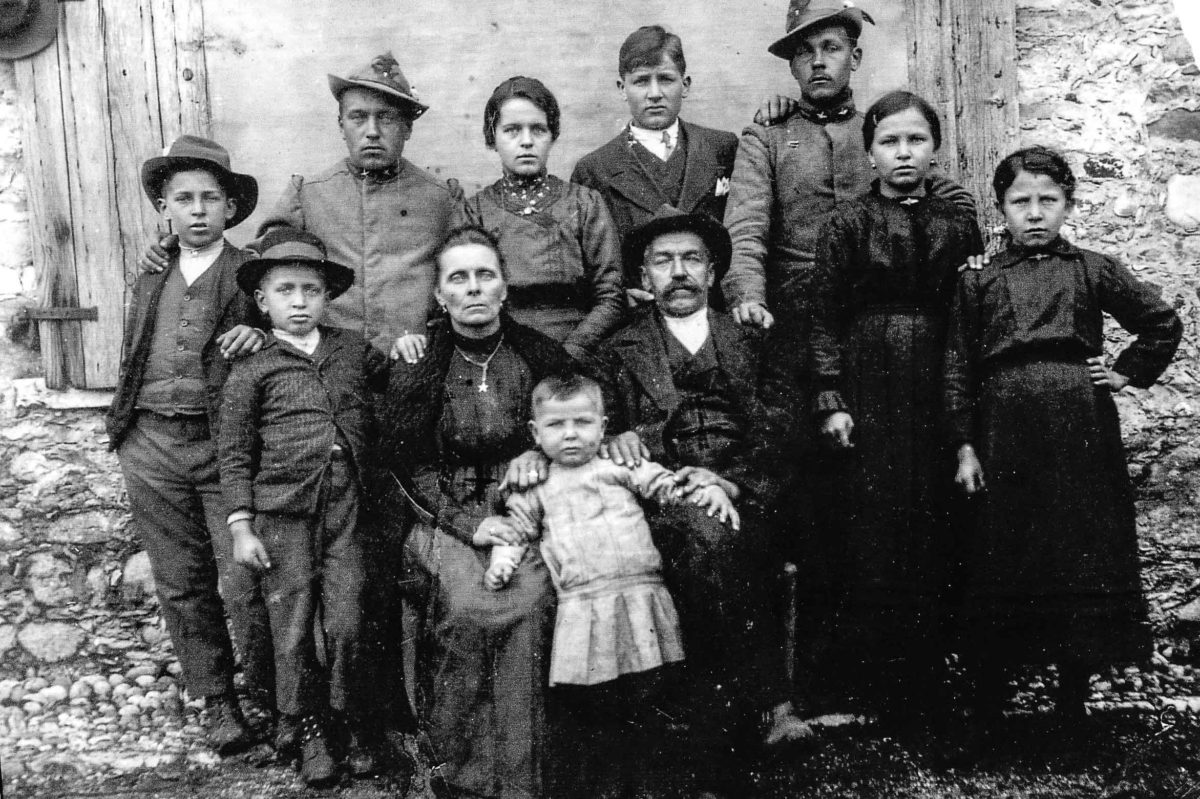This blog is about photos in the lives of the Veneto market gardener families and it is adapted from a blog that had been posted on
the Veneti market gardeners website in 2021. The photos of people were taken in Italy before the first generation migrated – more than 9 decades ago.
The family in the feature photo is the Rossetto family – parents and nine children who lived in Bigolino. More detail is provided below.
When was the last time you took a photo? If you’re like me, it could have been very recently. Yesterday I took some photos of the back garden on my iPhone. I could look at the image straight away, edit it by cropping and share it with others via a text or other media and I could delete ones that I did not like or were not in focus. Taking photos is a very casual activity now because of advances in technology.
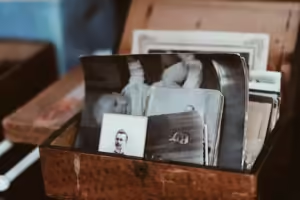
In the lives of the Veneto market gardeners, photos held a different value. They were precious because photos were not often taken if families did not own a camera. They were expensive to develop or purchase from a studio photographer.
I’ve been fortunate that the people I’ve interviewed for the project have given me permission to use photos that are now on the website. When you look at the galleries on the family webpages you’ll see photos that communicate stories for families. They capture a moment at a particular time, in a particular place and hold a memory for the future. The photos include images of individuals, family groups and events such as weddings and baptisms. There are not many that capture working life because photos were taken to show occasions that were socially important and told the stories of changes in families. Working life was probably not seen as an important focus whereas events like weddings, parties to celebrate other rituals like baptisms, confirmations and significant birthdays and anniversaries – and these were often occasions to remember and share with relatives.

Before the ease of taking snaps with smart phone cameras, photos were extremely important because migrant families could see how their absent members celebrated events. Photos of the veneti were sent from one side to the other side of the world.
The following photos convey images and stories of family members before they left the Veneto region. They were all taken before the Second World War. They are significant because they are images of a generation of people who have died – those who made the decision to migrate and begin a new life in Adelaide.
A photo from Bigolino – about 1918/19
I’m very interested in the early photos that were taken for family records. For example, the photo of the Rossetto family is the feature photo of this blog. It was taken about 1918/19 and depicts Elena Vettorello and Modesto Rossetto and their nine children against the family house at Bigolino. The two eldest sons are dressed in the uniform of the Alpino soldiers which is evidence of their service during World War I.
Perhaps the portrait was taken to mark the safe return of sons from the First World War. We do not know who took the photo. It has become a lasting record of a large family before the children married and before eight of the nine began emigrating to Adelaide. In 1926, Domenico, second from the left in the back row, was the first to migrate to Australia leaving his wife Carmela and daughter, Anna who arrived in Adelaide in 1929.
A farewell photo – 1938
The youngest Rossetto son, Giuseppe, (Beppi) aged about five migrated in 1938 and the following photo was taken on the day he left Bigolino inside the large family household. He is in the middle of the back row dressed in a suitcoat and tie.
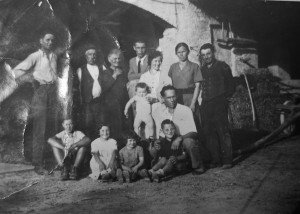
The photo shows three generations of the Rossetto family and the remaining children, their spouses and children. Beppi is photographed with his parents and other siblings, nieces and nephews including Johnny and Maria Rosa Tormena. Surely this photo was an attempt to record the departure of Beppi, the youngest member of the Rossetto family.
A keepsake photo – before a family reunion in Adelaide
A family photo that has particular emotional significance as a keepsake is the portrait of Elvio, Norina and Vito Rebuli taken after their father, Bruno,

left for Australia in 1927. In the photo, the three children under five years old, are photographed in an outside location and behind them it is possible to see a row of pot plants and then a group of people who has gathered near an old building. It is likely that it was snapped in the late 1920s.
It would have been taken by a professional photographer who converted the photo to a postcard that Nana Rebuli nee Rossetto posted to her husband to an address on Kangaroo Island where Bruno Rebuli worked for a farmer for some time before the family was reunited in 1931.
Another family photo before departing Italy

The photo of members of Giovanni Santin’s family was taken in Italy before his wife, Constantina and their four children, Luigi, Vito, Romildo and Virginia joined him in Adelaide in 1935. It was eight years after he had migrated to Adelaide. Giovanni’s first wife, Maria Tesseri had died young and their daughter, Angelina is included in the photo. In 1947, Angelina also migrated to Australia with three children a few years after her husband Pietro Compostella. It was a studio portrait to send to Giovanni in Jervois where he lived and worked for several years – a memento of the absent family.
Photo of a proxy marriage – 1930
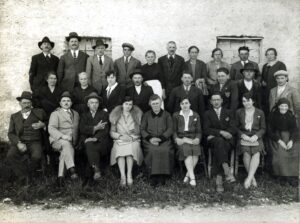
The large group photo was taken at the proxy marriage of Lina Bordin and Gelindo Rossetto in 1930. Gelindo’s father stood in for his son at the wedding. Lina is seated in the front row, fourth from the left, between her father-in-law who is pointing at Lina, and her mother-in-law. She wears a fur around her shoulders. The guests who are members of the Bordin and Rossetto families are well dressed and have been assembled outside a house where the photo was taken by a professional photographer. Lina lived with her parents-in-law for five months before she sailed to Adelaide to begin her married life with Gelindo. The photo would have been sent to Gelindo – as a memento of his marriage by proxy.
Passport photos – taken in Italy 97 years ago
Photo identification was important documentation for migrants in passports. It has been possible to locate some passports in the papers held at the National Archives of Australia. The passport photos were formal and often taken shortly before the migrants left their families.
The two photos of passports below are examples of the documents that migrants had to produce for migration. Both men had migrated in 1927 – Isidoro in September, and Pedro Berno in the first week of October. That was exactly 97 years ago!
Isidoro had arrived from Riese with his brother, Antonio and 17 year-old cousin, Giuseppe.
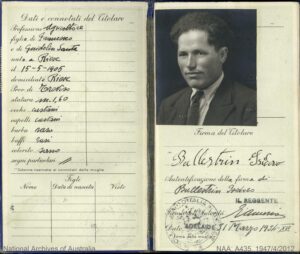
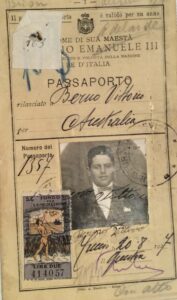
Pietro Berno had also left Riese with his cousin Gino and joined Pietro’s brothers, Fedele and Alberto in Adelaide.
It must have been a difficult situation when the first generation of Veneto market gardeners applied for naturalisation after living in Australia for some years. They had to hand over their Italian passports. The contadini who had separated from their family in the Veneto must have valued their passports as a material and symbolic link to Italy. Giving up their Italian nationality to become British subjects must have caused some reservations as they swore allegiance to King George VI.
Photographs taken of forebears taken many decades ago are valuable reminders of the circumstances of migrant families and their separation from loved ones. We can more deeply appreciate the challenges of migration in the snapshots of members of the Veneto families.
Madeleine Regan
6 October 2024
